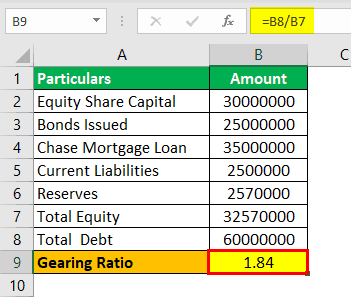Download FREE Gearing Ratio Formula In Excel Template and Follow Along!
Gearing Ratio Formula Excel Template.xlsx
Table Of Contents
Key Takeaways
- The gearing ratio, or leverage ratio, is a financial metric that measures the proportion of a company's debt to its equity.
- Moreover, other formulas allow the owner's capital or equity to compare against long-term or short-term debt.
- Financial institutions and creditors primarily prefer to utilize the gearing ratios as they are concerned with the firm's repayment capacity. Accordingly, they prepare the proposed loan terms and conditions of the proposed loan.
- In addition, internal management uses ratios to determine future profit and cash flows.
Frequently Asked Questions (FAQs)
1
Can gearing ratios be negative?
2
What is the capital gearing ratio formula?
3
How do gearing ratios work?
4

